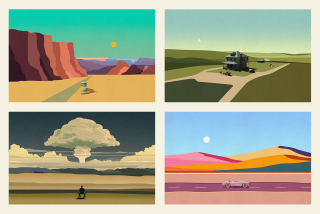Cold Mountain, nonfiction
- Share via
Moviegoers streaming to the theaters Thursday and beyond to see the critic-hyped adaptation of Charles Frazier’s “Cold Mountain” will switch off their cells, we hope, and sink into a survival saga set in 19th century rural America. Then people worked every corner of the outdoors. “They lived by farming a little bit of their own land, and by open-range herding of cattle and hogs, by hunting and fishing, gathering and gleaning,” Frazier wrote of the folk who inspired his 1997 novel. “In other words, they depended on just the opposite of most of the things we currently live by.”
In part to escape these current things, director Anthony Minghella shot the film in Romania’s Carpathian hill country. But the real Cold Mountain in the southern Appalachia range still supports much of the natural bounty from which the story’s primary characters -- Inman, Ada and Ruby -- sucked life during the Civil War. Thirty miles outside Asheville, N.C., in the lush Shining Rock Wilderness of Pisgah National Forest, it rises only 6,030 feet but offers an 11-mile round-trip hike (elevation gain 2,800 feet) to the summit and far-reaching views of lesser peaks.
Those seeking a less strenuous trip to the untouched world can pick up a copy of “The Travels of William Bartram.” This influential naturalist’s account of the Southeast in the late 1700s is what Inman reads as a kind of salve for his wounds on the long journey home from the war.
For details on hiking on and around Cold Mountain, go to www.exploreasheville.com. For more information about Bartram, visit a library, bookstore or www.bartramtrail.org.
More to Read
Only good movies
Get the Indie Focus newsletter, Mark Olsen's weekly guide to the world of cinema.
You may occasionally receive promotional content from the Los Angeles Times.










